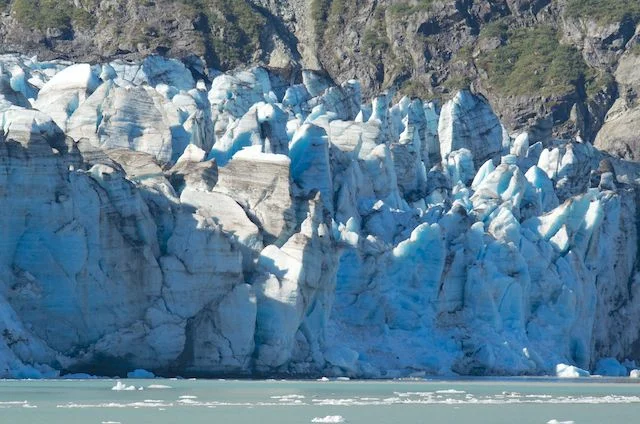It rained during the night so it was unfortunately a case of packing up wet tents after our final camping night. This would leave poor Charlie with the task of extracting the wet gear comprising our nine tents and drying it without assistance.
After breakfast we drove around to Soldotna and met up with our float-plane pilots who were to fly us across Cook Inlet to the West Foreland region and land us on a small glacial lake that drains into the Inlet.
The group split into two and the four of us flew in a Talin Airlines 1200 HP, eight seater Cessna Caravan together with an Indian family of four now living in San Francisco.
The flight across Cook Inlet took about thirty minutes and the view below, particularly on the western shore was quite amazing. The area consists of a huge flood plane of green reeds surrounded by an utterly random intertwining of small rivers of dark water and white sandy banks. From the air, the pattern produced was that of a paisley tapestry of great beauty.
After landing on the lake we transferred to an open, flat bottomed, aluminium dinghy powered by a 50 HP Yamaha and headed across the lake to a western corner where the Wolverine River flows into the lake.
This is the point where the salmon congregate before heading up to a further lake which is their spawning ground. Fishers come to this point not to see the bears but to catch the salmon.
This location provides a near limitless supply of fresh salmon for the bears and sure enough, as we arrived we were immediately in the company of three brown bears, a sow and her two, two-year old cubs. This will be their last season in her company as from next year they are independent.
The bears seemed unperturbed by our approach but nonetheless we still maintained about 50 m space so as not to disturb their feeding. One of the cubs was in the water with only his head showing but the other two were on the river bank grabbing fish as they made their desperate attempts to swim up this fast flowing rocky creek.
In addition, masses of noisy and squabbling glaucous gulls waited around the river bank picking up pieces of discarded salmon flesh.
The bears prefer to eat the gonads, head and skin as these have the greatest fat content and the bears need to load up with fat as fuel for their forthcoming winter hibernation.
We took lots of photos and then without warning the bears departed.
We then sat and waited for another two hours and then out of the dense surrounding rain forest appeared three black bears, again a sow and two cubs. These are smaller bears and avoid contact with the larger and more aggressive brown (“grizzly”) bears.
Further photos were taken and then it was time to return but just before leaving, a bald eagle swooped from a tree above us and grabbed a salmon from the water in front of us. This largish fish made the task of lifting off from the water very hard work but the eagle just managed it!
We returned to the plane in our open boat in heavy rain but despite these miserable conditions, we were all thrilled with the experience we’d just had.
The final part of the day was to drive back the three hour trip to Anchorage where we joined in a celebratory dinner marking the end of this remarkable camping adventure in northern Alaska and Canada. We said farewell to our nine travelling companions and leader Charlie and established email contacts so we can all keep in touch in the future.
Tomorrow we start phase two of our adventure by heading south to Juneau, the capital of Alaska.










































































































































